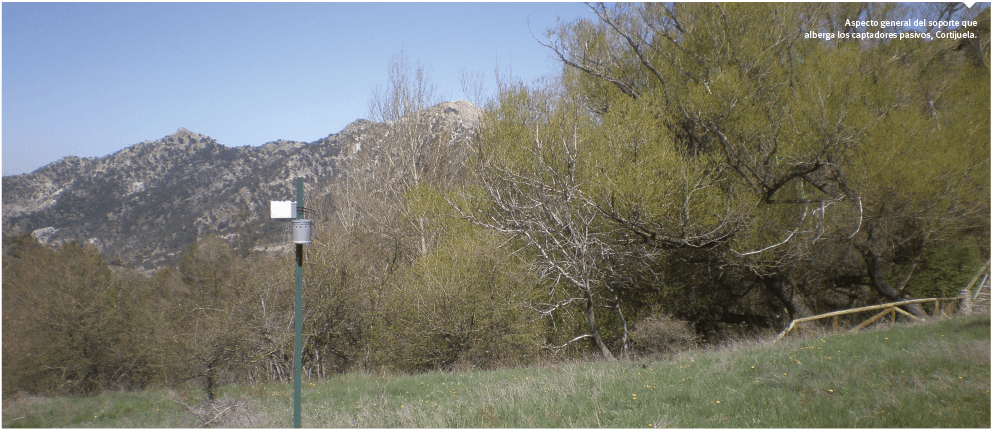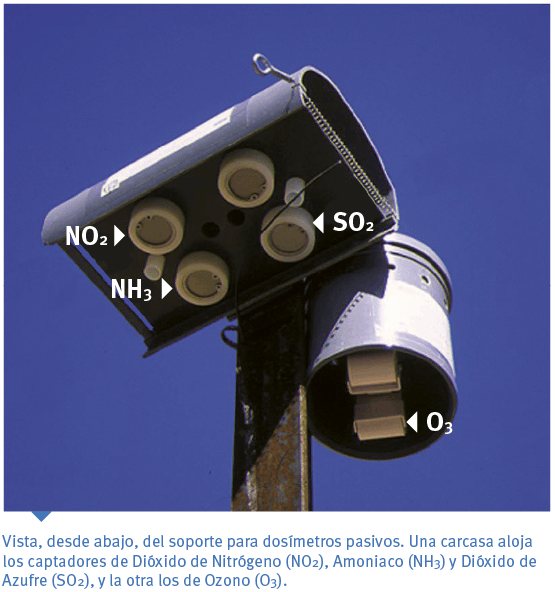Aims
The aim is to monitor the air quality on Sierra Nevada by the measuring of atmospheric contaminants without the need to install a permanent infrastructure or one that requires electric energy to operate.

Method and effort
The devices installed are based on the physical principles of absorption and adsorption. They enable us to generate a time series of the concentrations of four of the gases known to be the contaminants with the greatest impact on plant species. Two of these gases are considered primary contaminants (SO2 and NH3) and the other two secondary ones (O3 and NO2). These may have been transported over long distances or may have been produced in situ.
In each of the three localities, two replicates are installed to collect each contaminant. The collectors of SO2, NO2, and NH3 are mounted on one PVC frame and those of O3 on another. Both frames are fixed to a post of 2.5 m high.

Periodicity
The collectors are replaced every two weeks.
References
Matyssek, R., Bytnerowicz, A., Karlsson, P.E., Paoletti, E., Sanz, M., Schaub, M. y Wieser, G. 2007. Promoting the O3 flux concept for European forest trees. Environ. Pollution 146. 587-607.
Bytnerowicz, A., Sanz, M.J., Arbaugh, M.J., Padgett, P.E., Jones, D.P. y Dávila, A. 2005. Passive sampler for monitoring ambient nictric acid (HNO3) and nitrous acid (HNO2) concentrations. Atmos. Environ., 39, 2655-2660.
Ferreti M., Sanz, M.J. y Schaub M. (eds.) 2004. O3 SWE- Ozone and the Forests of south Western Europe. Final Report. 149 pp.